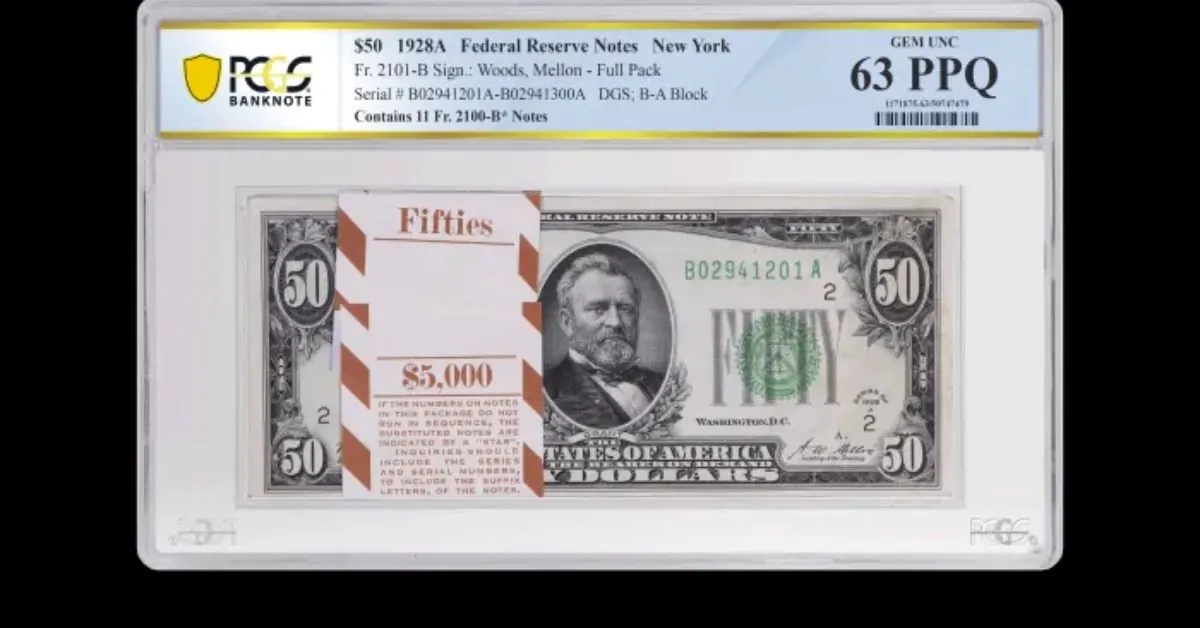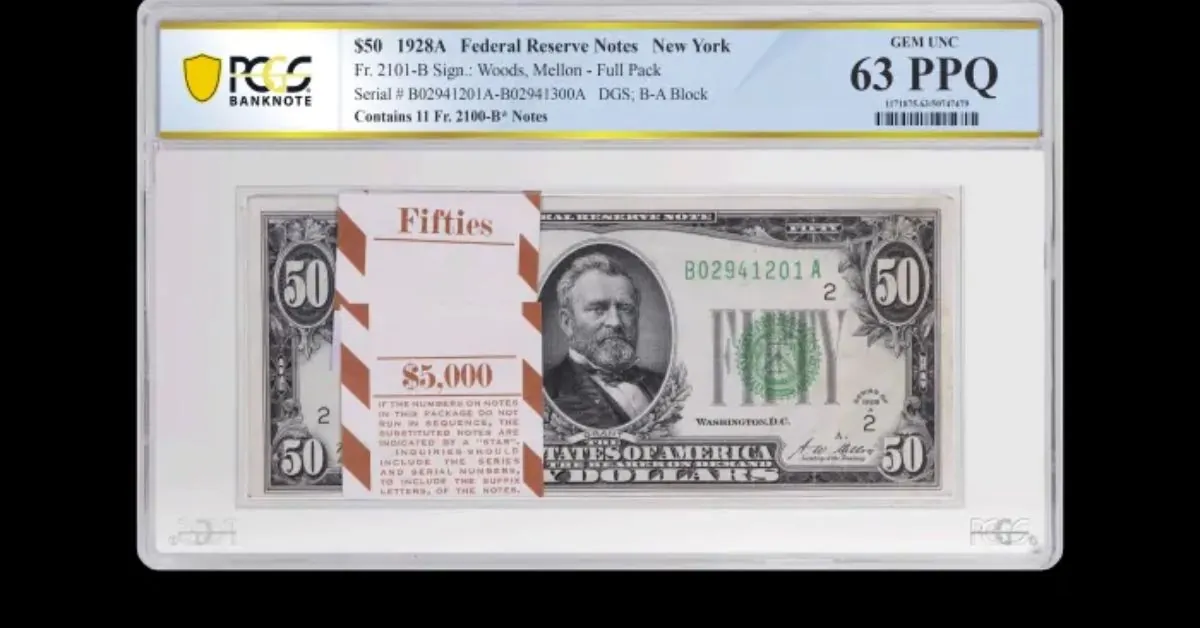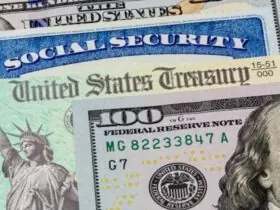Professional Coin Grading Service (PCGS) has recently made waves in the numismatic community by grading an exceptional 100-pack of Series 1928A $50 Federal Reserve Notes. This rare collection not only showcases the beauty and historical significance of U.S. currency but also highlights the growing popularity of PCGS’s innovative pack grading service. Here’s a closer look at the extraordinary nature of this find and the significance of its grading.
A Historic Find: The Series 1928A $50 Federal Reserve Notes
This Article Includes
The 100-pack of Series 1928A $50 Federal Reserve Notes was printed in 1931, during the depths of the Great Depression. These notes, issued by the Federal Reserve Bank of New York, were originally designed to be redeemable for gold at the U.S. Treasury or any Federal Reserve branch. At the time of their issuance, the pack of $50 bills—totaling $5,000—had the purchasing power equivalent to approximately $100,000 today. This fact alone places the pack in a unique historical context.
However, the notes were soon to become obsolete for gold redemption after President Franklin D. Roosevelt’s Executive Order in 1933, which prohibited the conversion of paper money into gold. This 100-pack represents a piece of American history from a time of economic upheaval.

Star Notes: A Unique Feature of This Pack
What makes this pack even more remarkable is the inclusion of 11 Star Replacement Notes. These Star Notes, part of the Series 1928 (without the “A” suffix), are particularly rare and valuable due to their unique characteristics. While the Series 1928A notes feature the typical design, the Star Notes in this pack were issued with an older style that had been officially discontinued.
These 11 Star Notes are further distinguished by their use of numeric Federal Reserve district seals, as opposed to the letter codes seen in the standard Series 1928A notes. This blend of different designs within a single pack adds a significant layer of rarity and intrigue, making this find an even more exceptional piece of numismatic history.
The Importance of Pack Grading
The decision to grade the 100-pack as a single unit rather than as individual notes plays a key role in its value. According to PCGS President Stephanie Sabin, grading the pack as a whole preserves the unique history of the original discovery and allows collectors to appreciate the rarity of the intact pack. If each note were graded and encapsulated individually, this connection would be lost, and the historical context of the pack would be diminished.
By using its advanced pack grading service, PCGS has helped preserve this remarkable collection in its original form, offering a rare glimpse into a moment in American monetary history. The pack was graded as Choice Unc. 63PPQ, signifying that the notes are in excellent condition with minimal wear, an important factor in their numismatic value.
A Window into the Past: Preserving History for Future Generations
The discovery of this 100-pack underscores the continued relevance and appeal of numismatics. While these Series 1928A $50 Federal Reserve Notes were once part of an everyday currency system, today they represent a bridge to the past—a testament to the resilience of the American economy during the Great Depression.
As PCGS President Sabin notes, this full pack is now securely preserved in an innovative holder, ensuring that future generations can admire its historical and numismatic significance. Whether viewed as a collector’s item or as a piece of history, the 100-pack of Series 1928A $50 Federal Reserve Notes is a remarkable find that continues to captivate collectors, dealers, and historians alike.
Conclusion
The 100-pack of Series 1928A $50 Federal Reserve Notes graded by PCGS represents a rare and invaluable treasure within the numismatic world. With its combination of historical significance, unique design features, and the innovative pack grading service, this collection exemplifies the growing appeal of well-preserved U.S. currency. For numismatists, this find is more than just a set of bills; it is a time capsule that offers a direct connection to a defining moment in American history.







Leave a Reply